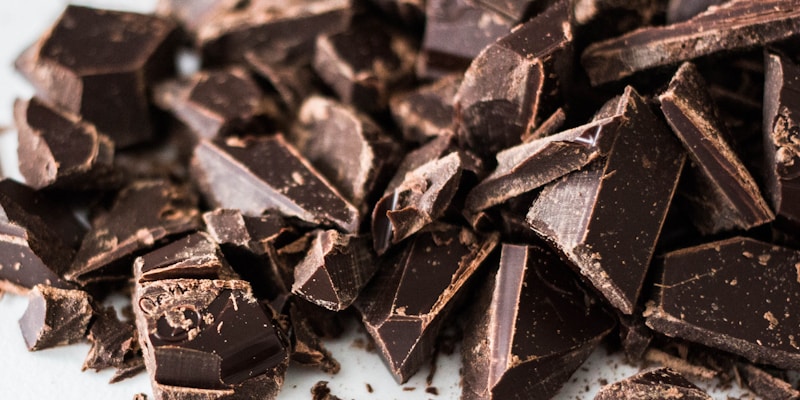The World’s Most Expensive Chocolate: A Journey Through Luxury, Flavor, and Rarity


A Deep Dive into Luxury Confections
Published on Food Business Blog | 5 min read
Chocolate has always been associated with pleasure, indulgence, and celebration. From a small square after dinner to a lavish dessert in a five-star restaurant, this rich treat has a way of making moments special. But in the world of fine dining and luxury gastronomy, there’s a category of chocolate that stands apart — creations so rare, so carefully crafted, and so beautifully presented that they command prices higher than a fine bottle of wine.
In this article, we’ll take a deep dive into the fascinating world of the most expensive chocolates, exploring why they cost so much, the craftsmanship behind them, the rare ingredients they use, and how global cocoa challenges are affecting even everyday chocolate prices.
1. The Crown Jewel: To’ak Chocolate
When it comes to the title of world’s most expensive chocolate bar, To’ak Chocolate from Ecuador often holds the crown. Their limited-edition “Masters Series—Enriquestuardo” 50 g bar retails at an astonishing $490, which works out to about $9.80 per gram. That’s more expensive per gram than some luxury cheeses or caviar.
Why To’ak is So Expensive
Rare Nacional Cacao: To’ak exclusively uses the Nacional variety, a nearly extinct cacao bean from Ecuador once thought to have disappeared. Its genetic lineage dates back thousands of years and is treasured for its floral, fruity aroma and complex flavor.
Heritage Preservation: Each bar represents a step in preserving these rare cacao trees, with part of the profits going into conservation efforts.
Aging Like Fine Wine: Instead of being sold fresh from production, To’ak ages some of its chocolate in wooden casks — sometimes for years — to allow deep, layered flavors to develop.
Minimal Ingredients: Only pure Nacional cacao and cane sugar are used, ensuring an unadulterated tasting experience.
Luxury Presentation: Each bar is presented in an artisan wooden box, often with artwork or collectible details, turning the chocolate into an edible work of art.
2. Knipschildt’s La Madeline au Truffe
Another contender for luxury status is the La Madeline au Truffe from Danish chocolatier Fritz Knipschildt. This creation is a ganache masterpiece that contains a rare Périgord truffle at its center, coated in 70% Valrhona dark chocolate and rolled in fine cocoa powder.
Price: Around $250 per piece — and yes, that’s for just one truffle.
The process is entirely handmade, and the combination of rare truffle and gourmet chocolate results in an earthy, rich, and intensely indulgent bite.
3. DeLafée Gold Chocolate Box
For those who believe luxury should sparkle, DeLafée of Switzerland offers chocolates covered in 24-karat edible gold. Each box comes with an antique Swiss gold coin, making it part gourmet experience, part collectible.
Price: Between $390–$560 per box.
The flavor itself is smooth and delicate, but the gold leaf transforms each chocolate into a literal jewel for your plate.

4. Amedei Porcelana
Italian chocolatier Amedei produces the Porcelana variety — a rare white-colored cacao bean that gets its name from its porcelain-like appearance. Recognized as one of the finest chocolates in the world, Porcelana has won multiple international awards and offers a balanced, velvety taste with subtle fruity notes.
Price: About $90 per pound (or $12 for a 1.8 oz bar).
5. Other Extraordinary Creations
Le Chocolate Box: A collaboration between a jeweler and chocolatier featuring gourmet chocolates paired with diamond and sapphire jewelry. Price can exceed $1.5 million — though here, you’re paying more for the jewels than the chocolate itself.
Vosges Haut-Chocolat Exotic Truffle Collection: Combines flavors like wasabi, curry, and bacon with premium chocolate. More affordable than others on this list, but still positioned as a high-end experience.
6. What Makes Luxury Chocolate Expensive?
Beyond brand prestige, several tangible factors drive the high price of these chocolates:
a) Rare Ingredients
From nearly extinct cacao varieties like Nacional to rare white truffles, the sourcing is selective and costly.
b) Labor-Intensive Craftsmanship
Much of the process is done by hand — from roasting and conching to molding, decorating, and packaging.
c) Time & Aging
Some chocolates are aged for months or years, adding storage and handling costs but also complexity to the flavor profile.
d) Presentation
Luxury chocolate often comes in bespoke packaging — wooden boxes, hand-painted designs, collectible art prints — that turns it into a gift item as much as a food product.
e) Brand Story
Luxury consumers pay for authenticity, heritage, and exclusivity. To’ak’s conservation efforts or Knipschildt’s handmade truffles aren’t just marketing — they’re part of the product’s DNA.
7. The Global Cocoa Crisis: Why All Chocolate is Getting Pricier
While the chocolates we’ve discussed are expensive by design, the price of everyday chocolate is also on the rise globally.
Climate Change: Unpredictable weather and extreme temperatures are reducing yields in major cocoa-producing countries.
Diseases in Cocoa Plants: Pests and plant diseases have wiped out significant portions of crops in West Africa.
Supply Shortages: Global demand has outpaced supply, leading to historic cocoa prices — futures have recently exceeded $12,500 per metric ton.
Market Speculation: Financial speculation in commodity markets has increased volatility.
Production Costs: Higher costs for energy, transport, and labor have added to the final retail price.
8. How to Experience Luxury Chocolate
Order Limited Editions: Some brands release smaller, more affordable versions of their premium bars.
Visit Specialty Chocolate Shops: Sampling flights let you taste small portions of rare cacao.
Pair with Wine or Coffee: A fine red wine or single-origin coffee can elevate the tasting experience.
Gift for Special Occasions: These chocolates make for unforgettable presents.
9. Serving & Presentation Ideas
Serve at Room Temperature: This allows flavors to bloom fully.
Cut into Small Pieces: Luxury chocolate is about savoring, not eating in large bites.
Use a Tasting Plate: Present alongside fruits, nuts, or cheese for pairing.
Consider Lighting: Dim, warm lighting enhances the mood for a tasting.
10. Final Thoughts
The world’s most expensive chocolates are more than just sweet treats — they are the result of rare ingredients, master craftsmanship, cultural heritage, and artistic presentation. Whether it’s To’ak’s conservation of the Nacional cacao tree, Knipschildt’s truffle-infused luxury, or DeLafée’s golden sparkle, each has a story to tell and an experience to offer.
And while most of us might not indulge in $500 chocolate every week, understanding what makes these creations special can deepen our appreciation for chocolate in all its forms — from the humble supermarket bar to the rarest cacao treasures on earth.
Expand Your Reading
Discover more content you might enjoy
